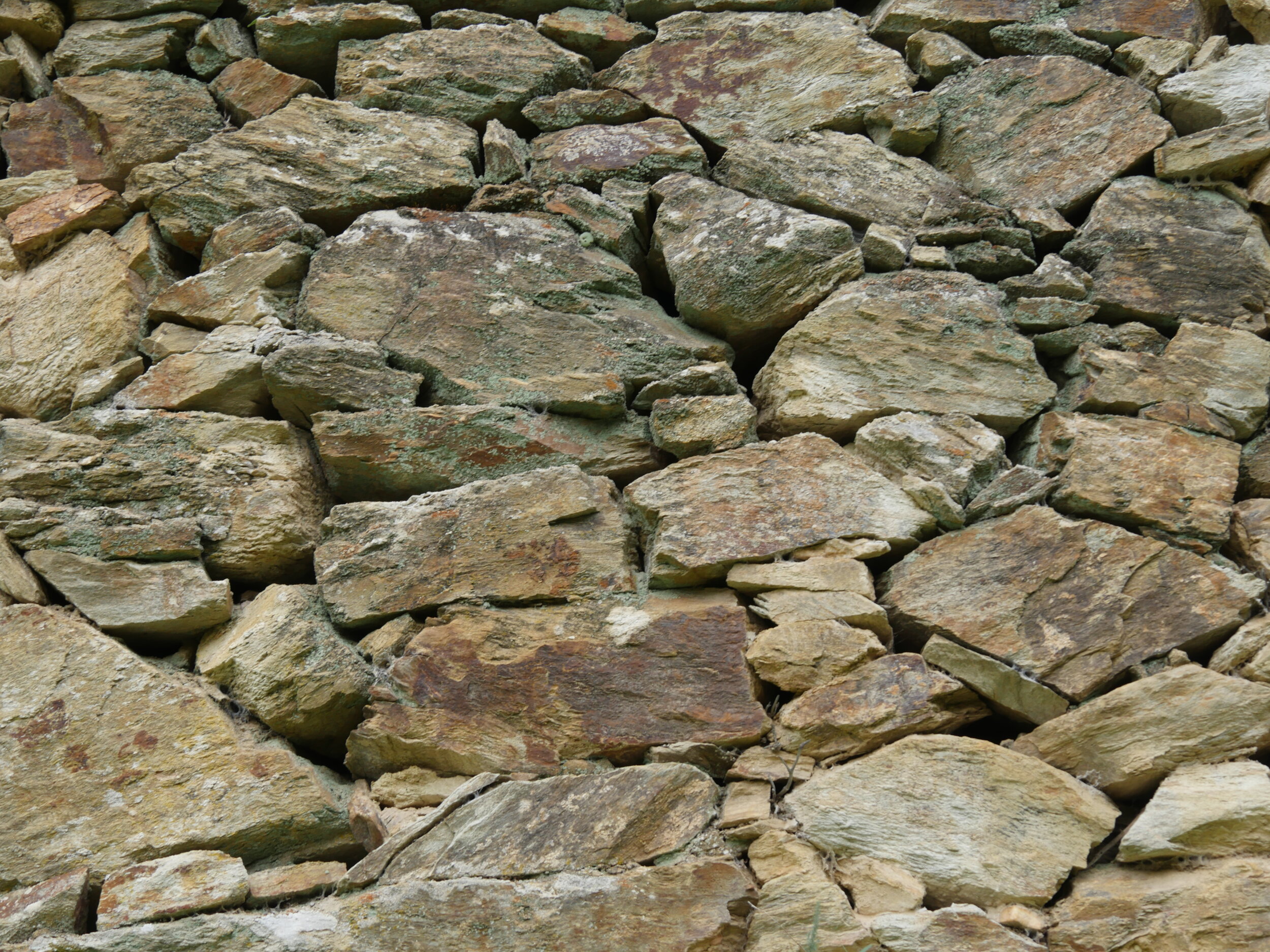II love this time of the year at the Quinta. The landscape is verdant and soft to the eye! The hum of ongoing vineyard work – horse Tedo and Filipe plow between the rows of vines, pruned grapevine debris burns in small piles around the property, a new parcel undergoes preparation and hoes clink clink while working the rocky schist soil. Bird songs are heard from sunrise to dusk. Soon our dormant grape vines will burst back into life in spring.
Schist is the backbone to Douro Valley viticulture: this rock formation will become the dry rock walls that support the grape vines, and will also flake and crumble into the powdery soil that the grape vines flourish in.
A slate-like metamorphic rock, pushed above our earth’s surface from the intense heat deep below over millions of years, schist creates the dramatic and intensely beautiful landscape unique to Douro Valley. Hundreds of years ago, man painstakingly hand-stacked schist rocks into dry rock walls (meaning without any cement reinforcement), transforming the steep sides of Douro Valley into terraced vineyards.
At Quinta do Tedo we have over 4 km / 2.4 miles total of dry rock walls, and every spring our vineyard team restores parts that have fallen from intense periods of rain. These walls support the 25 cm / 10 “ of humidity-retaining top soil, and underneath the top soil is shist bedrock’s vertical stratas; the vines’ roots penetrate down through the fissures, sometimes down as much as 25 m / 75 feet, to find moisture to survive the arid and hot summer months of 40 C + / 105 F + temperatures. As our property is dry farmed the grape vine finds a way to survive.
Nutrient-rich and humidity-retaining schist in another guise – the soil for producing low yields of small, thick-skinned intensely flavored grapes that are crafted into our world-class Ports and Douro DOC Wines.
Saudé





